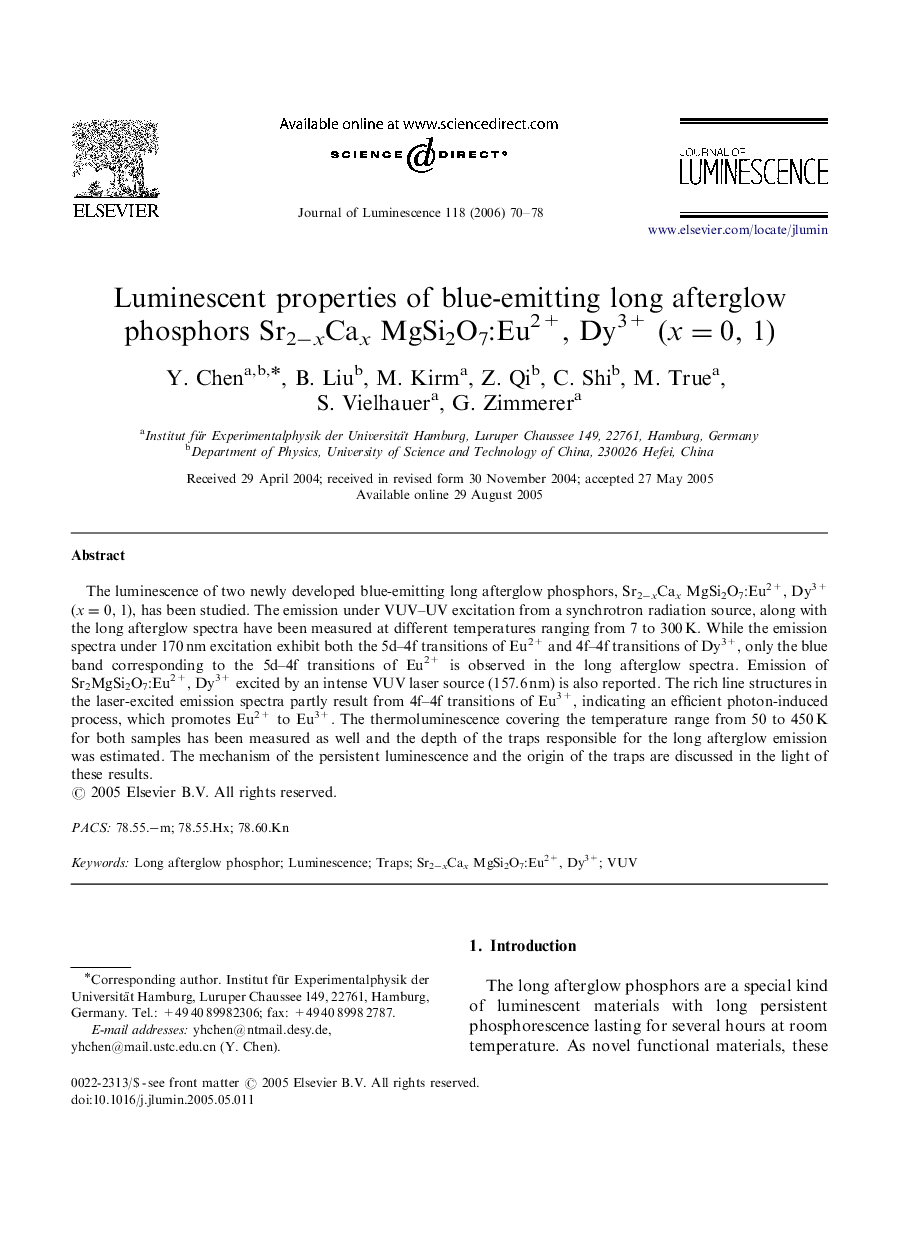| Article ID | Journal | Published Year | Pages | File Type |
|---|---|---|---|---|
| 5404355 | Journal of Luminescence | 2006 | 9 Pages |
Abstract
The luminescence of two newly developed blue-emitting long afterglow phosphors, Sr2âxCax MgSi2O7:Eu2+, Dy3+ (x=0, 1), has been studied. The emission under VUV-UV excitation from a synchrotron radiation source, along with the long afterglow spectra have been measured at different temperatures ranging from 7 to 300Â K. While the emission spectra under 170Â nm excitation exhibit both the 5d-4f transitions of Eu2+ and 4f-4f transitions of Dy3+, only the blue band corresponding to the 5d-4f transitions of Eu2+ is observed in the long afterglow spectra. Emission of Sr2MgSi2O7:Eu2+, Dy3+ excited by an intense VUV laser source (157.6Â nm) is also reported. The rich line structures in the laser-excited emission spectra partly result from 4f-4f transitions of Eu3+, indicating an efficient photon-induced process, which promotes Eu2+ to Eu3+. The thermoluminescence covering the temperature range from 50 to 450Â K for both samples has been measured as well and the depth of the traps responsible for the long afterglow emission was estimated. The mechanism of the persistent luminescence and the origin of the traps are discussed in the light of these results.
Related Topics
Physical Sciences and Engineering
Chemistry
Physical and Theoretical Chemistry
Authors
Y. Chen, B. Liu, M. Kirm, Z. Qi, C. Shi, M. True, S. Vielhauer, G. Zimmerer,
